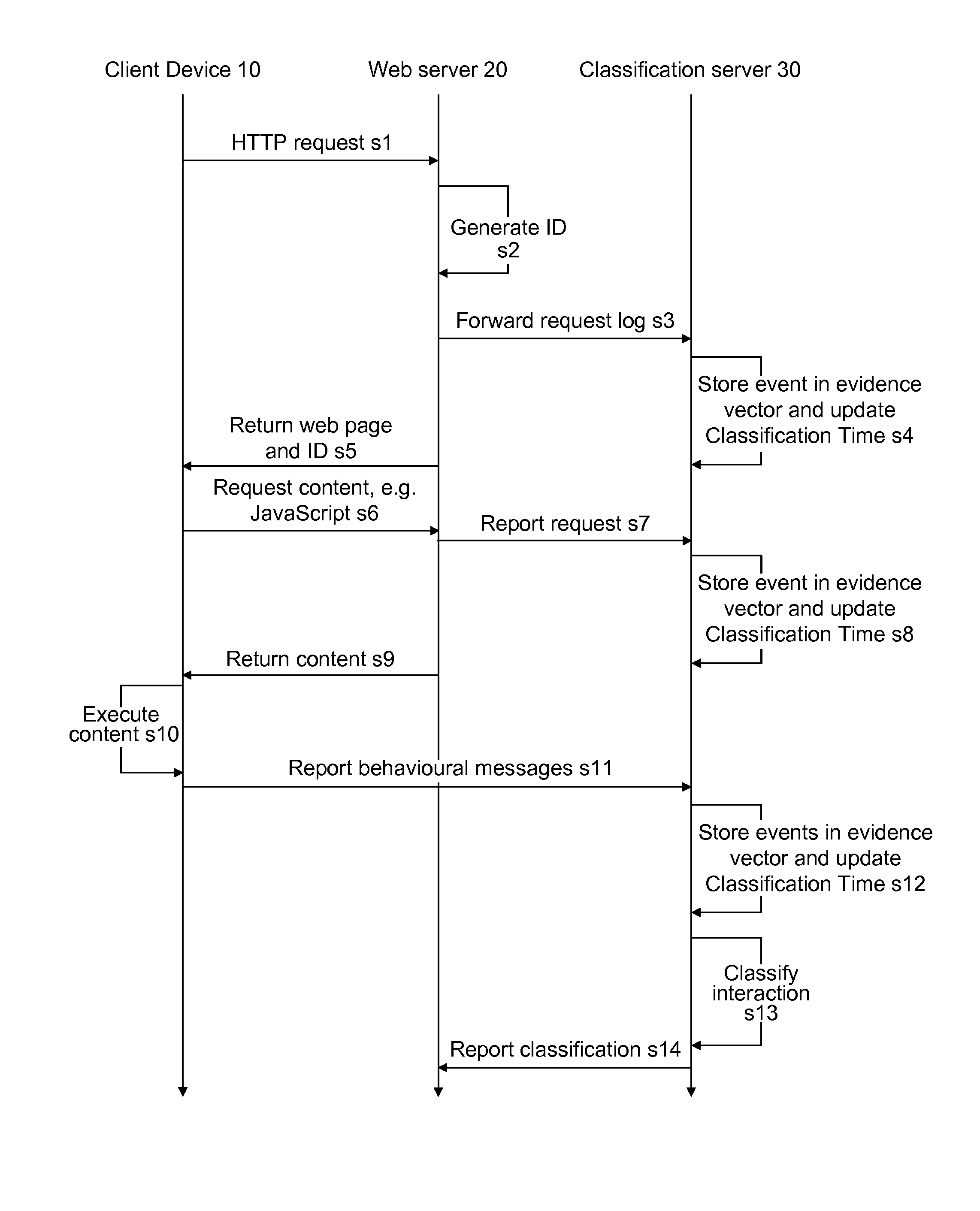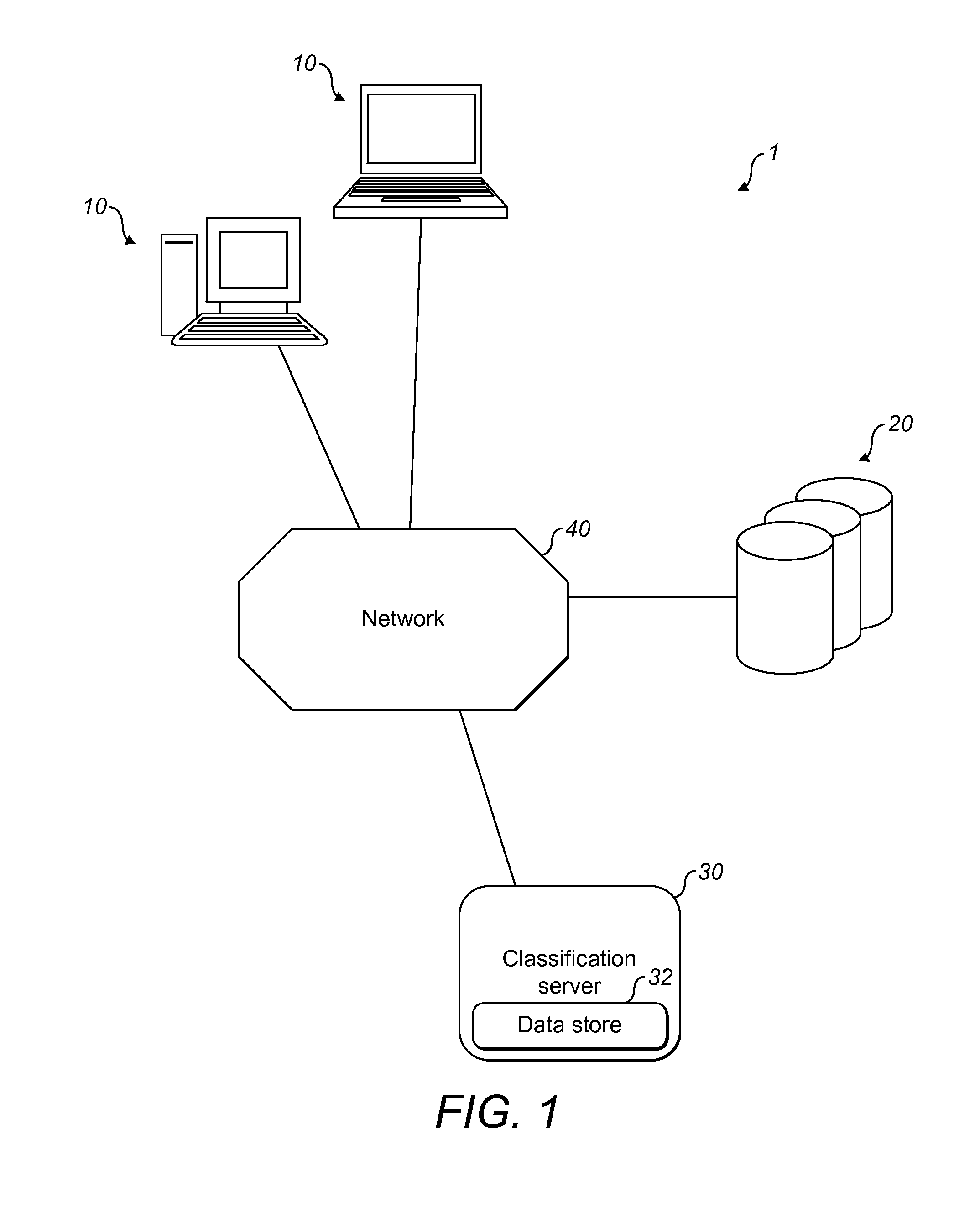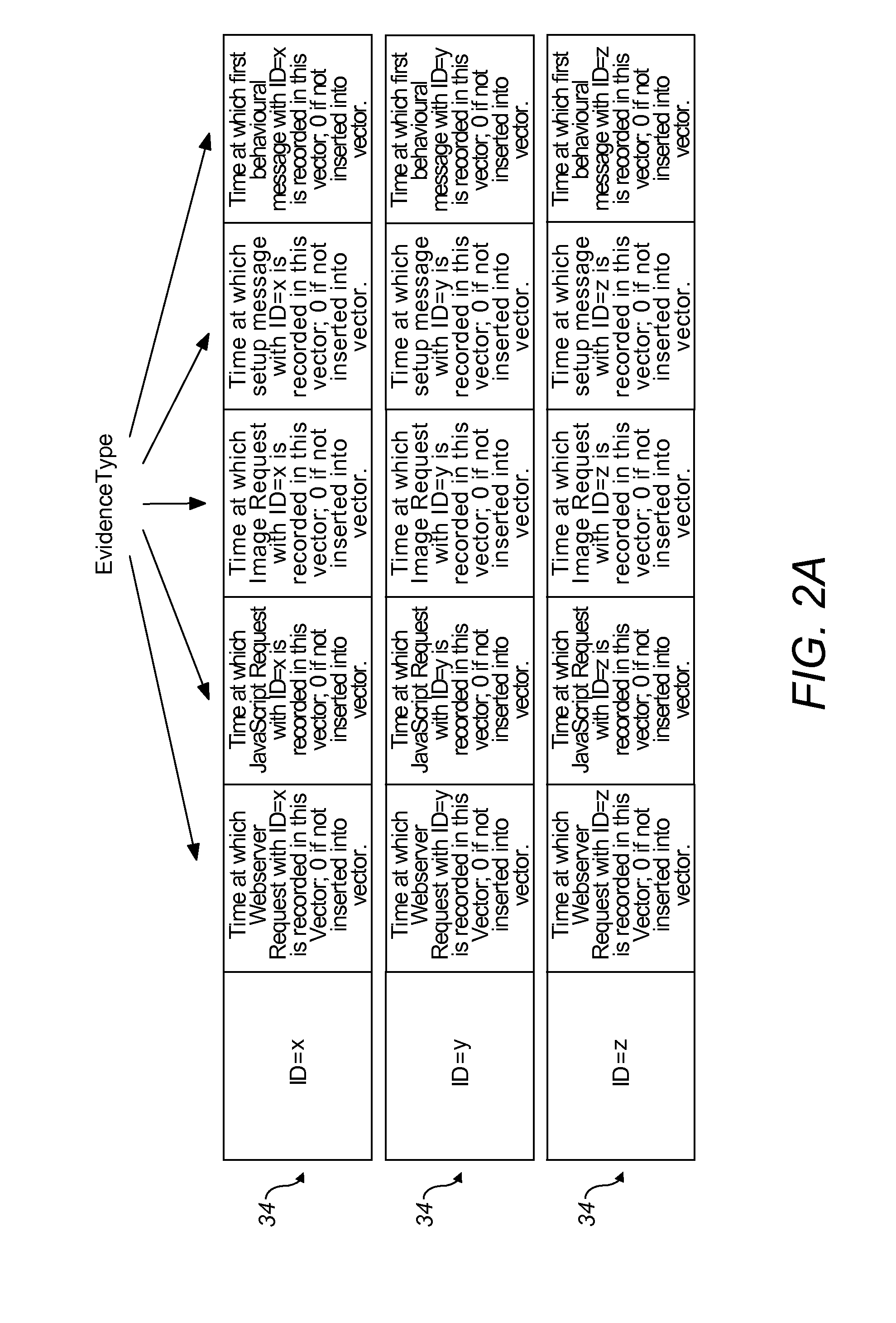[0018]By calculating a classification time at which a predetermined
degree of confidence can be established in determining a classification for a client device, based on the events associated with a content request, the present invention can assist in minimising the time necessary to carry out a reliable classification based on these events. For example, the present invention can be used to assess, in the fastest time possible to ensure a known
degree of confidence, whether the agent controlling the client device is likely to be a bot, or other malicious entity.
[0020]The present invention also takes account of the fact that the order and timing of the associated events being recorded may vary greatly across resource requests. For example, for some particular resource request, we may find that the corresponding web-
server log is queued at the
web server for over thirty minutes before it is sent to the classification server for
insertion into the evidence vector (potentially because the
web server is under
high load at the time, and so the outgoing log messages are held in a
queue). In such a case, if the client-side events, like those relating to mouse movements or key strokes, by-pass the said
queue, then these client-side events would be recorded in the associated evidence vector a long time before the server-side event is recorded in the evidence vector. By contrast, for some other resource request, the resource may be requested in a background tab at the client. In such a case, some client-side behaviour (a mouse movement, for example) would not be recorded until the background tab is opened in the foreground. By determining a classification at an appropriate classification time, which captures these types of eventuality, the present invention avoids the danger that client devices are mischaracterised because classification takes place before some of the associated events have been recorded.
[0023]As described above, the present invention helps to ensure that classification occurs at the earliest time for which a predetermined level of confidence in the classification can be achieved. However, in some cases, it is preferred to receive a classification as soon as possible, even if the predetermined level of confidence cannot yet be achieved. Accordingly, in some preferred embodiments, the method may comprise determining a provisional classification of the client device in dependence on the evidence vector, wherein the step of determining a provisional classification occurs prior to the classification time. The provisional classification may include an indication of the level of confidence with which the classification has been made, to allow subsequent decisions (such as regulating the client device's access) to be taken in dependence on this information.
[0025]By using information relating to the order in which different events were stored, a more accurate classification time can be established. The order may also be considered when assessing the nature of the agent controlling the device, potentially leading to further advances in the reliability of the classification. For example, the order in which certain events take place when a resource is requested may be determined by the quirks of the particular browser, and so this information may be used to classify the client device.
[0030]Preferably, the classification time is determined repeatedly up until the evidence vector is processed. The classification time is determined in dependence on the evidence vector, which in turn stores events that have occurred. Therefore, as further events occur and are stored in the evidence vector, it may be appropriate to update the classification time. For example, the classification time may be determined at regular intervals up until the evidence vector is processed, or may be determined each time a change is made to the evidence vector. However implemented, repeated determination of the classification time helps to ensure that it is accurately determined using the latest available information.
[0031]Preferably, the method further comprises the step of assigning an interaction ID to the
web resource request, wherein events associated with this resource request are stored in the evidence vector associated with this interaction ID. The interaction ID can be used to keep track of the events that are related to a particular resource request, allowing a
system to be developed which simultaneously monitors and classifies the requests from a plurality of client devices from a plurality of web servers. The interaction ID assists in maintaining a
record of the different events that occur when a particular client device requests a resource from a particular web server, and thereby assists in analysing this request to classify the client device.
 Login to View More
Login to View More  Login to View More
Login to View More 


